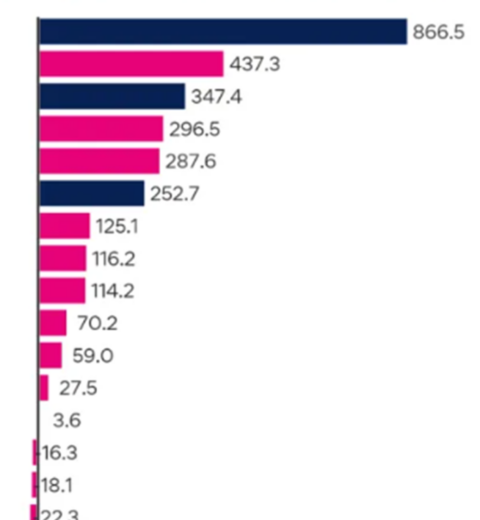Published 11 October 2023 – source Cigna Healthcare / ABS / AFR / The Guardian
Many articles have been written on “The Great Australian Exhaustion”, the ripple effects of the long-lasting effect of the pandemic, what are the potential causes, what it means to employers and employees etc. However, none have addressed specifically on how to deal with the increasing effect of “the great Australian exhaustion”, that has contributed significantly towards the skilled labour shortage currently at 440,000 and increasing steadily across Australia.
What is the Great Australian Exhaustion and what does it mean for the shortage of skilled labour in Australia and the long-term productivity?
The term “The Great Exhaustion” signifies the profound sense of weariness, pressure, and emotional depletion that Australian employees commonly encounter. It extends beyond mere fatigue following an extended workday; it encompasses a profound sense of mental and emotional exhaustion. This occurrence has grown so widespread that approximately half of Australian workers are said to be experiencing it. This issue has been ongoing for some time, and workers in Australia from diverse sectors and backgrounds are grappling with exceptionally high levels of burnout. As a result, many are contemplating a shift in their career paths and are looking for alternative, less stressful pursuits.
Some global statistics by Cigna HealthCare in their annual 360 Global Well Being Survey 2022: –
30% of people in Asia and North America are struggling with work and life due to stress.
50% of European workers are at risk of mental health issues.
70% of those in the Middle East say they are feeling drained.
72% are unable to switch off from their work
76% are feeling drained
61% have feelings of helplessness
94% have symptoms of burnout
65% of working people have re-evaluated their life goals in recent times.
48 million people in the USA quit in 2021.
30% of employees in the Middle East looked for new roles in 2022
58% of employees in Europe are thinking of looking for new roles in 2022
With stress and anxiety at an all time high. Many have chosen to resign. This is where the term “the Great Resignation” came to light, describing the record number of people leaving their jobs since the beginning of the pandemic. Working people are also channelling their time and effort to hybrid or remote only positions, side gigs and online education.
However, in Australia, the “Great Resignation” didn’t happen, but the “Great Burnout” did…
Latest data from the Australian Bureau of Statistics (ABS) has revealed the national turnover or ‘quit’ rate rose to 9.5% over the year to February 2022 – its highest level since 2012. The ABS data show 1.3 million people (or 9.5% of employed people) changed jobs, the highest annual job mobility rate since 2012, up from 7.5% for period ending February 2021.
Australian workers are generally in poorer physical and mental health since the pandemic across all ages and stages. And prime-aged workers, those between 25 and 55, are reporting the greatest burn-out. Some 50% of prime-aged workers in the survey feel exhausted at work. About 40% reported feeling less motivated about their work than pre-pandemic, and 33% found it more difficult to concentrate at work because of responsibilities outside of work. Several other elements could be influencing this pervasive burnout. The contemporary workplace, characterised by perpetual connectivity, extended working hours, and elevated demands and responsibilities, may play a substantial role. Furthermore, the worldwide pandemic could have amplified sensations of seclusion, tension, and unease, potentially pushing many individuals to the brink of exhaustion.
They also see fewer opportunities for advancement than older workers and are more likely to feel like they don’t have enough time at work to do everything they need to do. It’s perhaps no surprise 33% of this prime-aged workforce is thinking about quitting. These workers may be showing up to their jobs but they are definitely burnt out.
How do we address the burnout which is causing low productivity and ultimately negative impacts not just individually, but also throughout the organisation.
Despite inflation and the unsettling global financial outlook, people continue to prioritise lifestyle, family and friends.
Employers must adjust their hiring strategies to attract and retain talent. It is also crucial to acknowledge that The Great Exhaustion is not solely an individual issue but a community and extends to society as a whole.
Employers and corporations must ensure that there is adequate mental health support.
Employers and corporations must ensure that work remains engaging even in a hybrid world.
Employers and corporations must create an environment where employees feel valued and heard.
Employers and corporations must ensure manageable hours and facilitate flexibility for a healthy work life balance.
The Influence on Professional and Personal Life
It’s concerning to observe that numerous individuals are departing from their successful careers due to this burnout. These are not just people dissatisfied with their jobs; they are professionals who have dedicated years to their respective fields, attaining success and recognition. Nevertheless, the toll of The Great Exhaustion is prompting them to reevaluate their life choices.
Many are in search of stress-free pastimes, exploring activities that bring them happiness, relaxation, and respite from the relentless pace of their professional lives. Whether it’s the pursuit of a hobby, dedicating more time to family, or even taking a sabbatical, the focus is shifting from career progression to personal well-being.
The Effect on the Working Environment
The converse side of this issue is equally concerning, as it entails the loss of many organisations’ top team members, along with the departure of intellectual property and the company’s culture. What’s more, as those grappling with exhaustion are either taking sabbaticals or exiting the industry altogether, it is creating a situation where replacing these top individuals becomes increasingly challenging.
Individual Accountability
We should also consider our own responsibility in such situations. Many individuals tend to prioritise their mental health lower on the list of priorities, often only taking action when they are on the brink of collapse. Engaging in regular mindfulness practices, which are supported by empirical evidence for their effectiveness, can assist in cultivating a new relationship with the challenging thoughts and emotions that contribute to feelings of exhaustion.
A Call to Action
Employers must adjust their hiring strategies to attract and retain talent. It is also crucial to acknowledge that The Great Exhaustion is not solely an individual issue but a community one, and extends to society as a whole.
- Employers and corporations must ensure that there is adequate mental health support.
- Employers and corporations must ensure that work remains engaging even in a hybrid world.
- Employers and corporations must create an environment where employees feel valued and heard.
- Employers and corporations must ensure manageable hours and facilitate flexibility for a healthy work life balance.




